Multi-directional Speaker Using Air Nonlinearity
Jiadi Yu 1 , Guangtao Xue 1
Microsoft Research Asia-Shanghai 2
Abstract
Traditional speakers emit sound indiscriminately in all directions, often causing noise pollution and interfering with private listening experiences in public spaces. Our innovative solution, MuDiS, introduces a revolutionary multi-directional speaker that directs distinct audio precisely to multiple users simultaneously without audio leakage. Using ultrasonic transducers and acoustic metasurfaces, MuDiS achieves wide-angle digital steering, independent audio beams, and minimal unintended leakage, vastly improving on existing commercial technologies.
Introduction: Why Directional Speakers?
Imagine walking through a crowded museum, each exhibit providing personalized audio commentary precisely where visitors stand—without any headphones or disturbing neighboring exhibits. Directional speakers make this scenario possible by focusing sound beams toward specific directions. This technology transforms public and communal spaces like museums, gyms, libraries, and offices into environments offering personalized audio experiences without noise pollution.
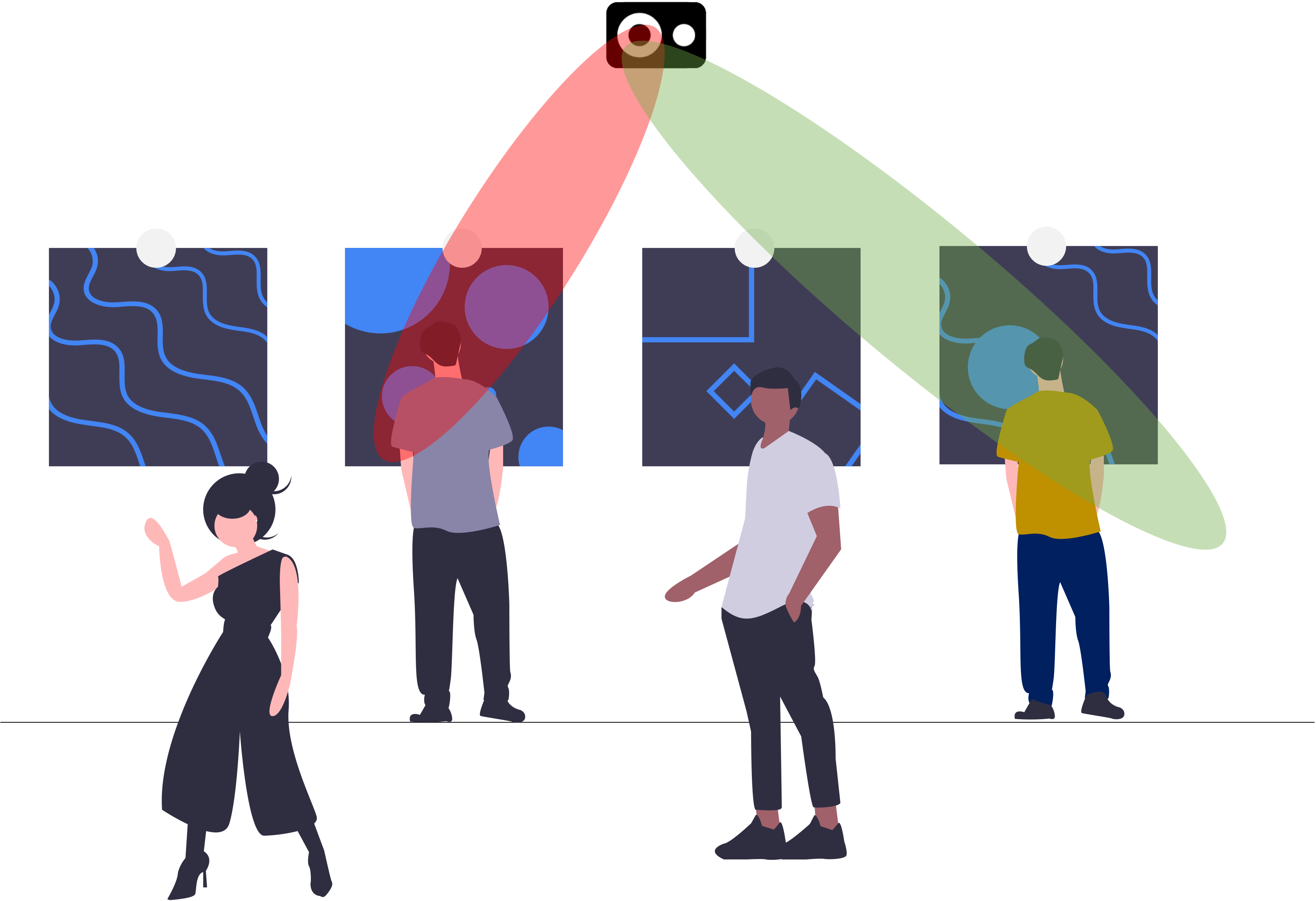
Challenges in Existing Technology
Current directional speakers either rely on large physical arrays that are bulky and difficult to deploy or employ parametric arrays with limited steering angles and mechanical constraints. Traditional parametric arrays also suffer from unintended audio leaks and nonlinear distortion, severely limiting their practical use.
MuDiS
MuDiS uniquely combines parametric array technology with carefully engineered acoustic metasurfaces and advanced optimization algorithms. The metasurface ensures correct spacing between transducers and transforms the emitted wavefront into a more uniform spherical shape. This significantly enhances the steering angle and reduces audio leakage.
Key Innovations
MuDiS employs three groundbreaking methods:
- Acoustic Metasurface Design: Our custom-designed metasurface corrects wavefront shape, enabling much wider steering angles (up to 130°) compared to traditional speakers. By precisely engineering the acoustic path, MuDiS significantly reduces leakage and grating lobes.
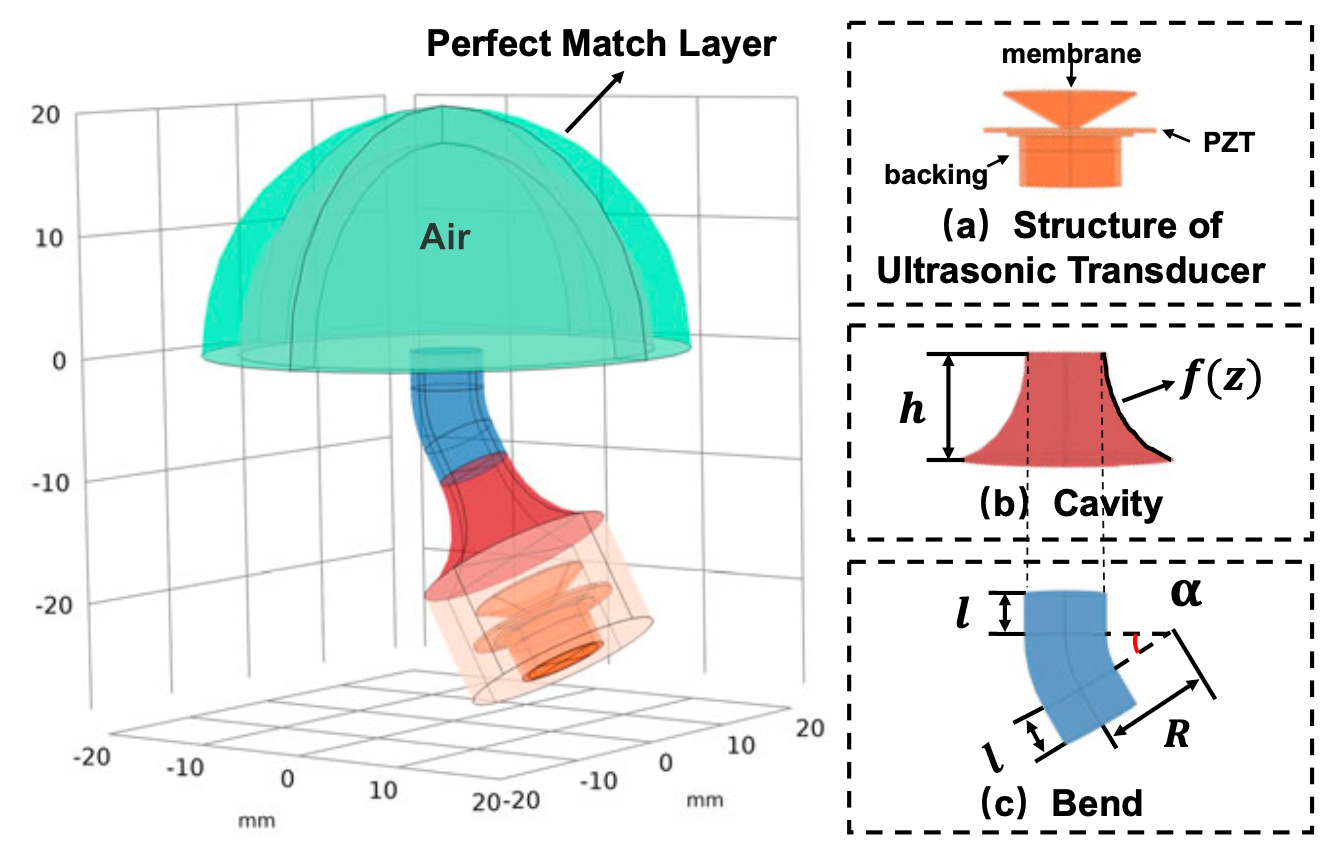
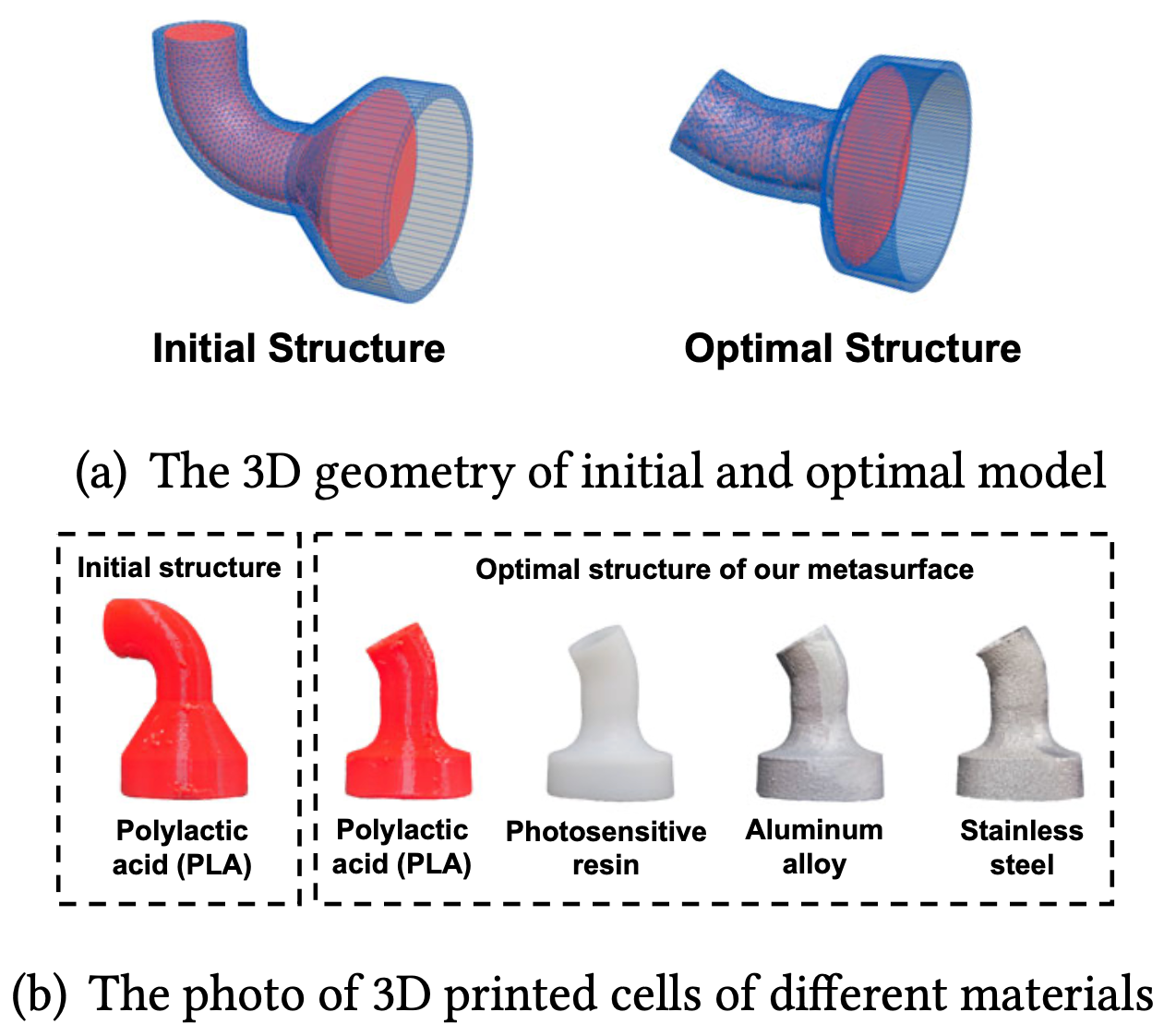
-
Optimization-based Beamforming: We developed an algorithm specifically targeting unintended audio leakage, minimizing interactions between multiple audio beams. This ensures each listener hears only their intended audio clearly.
-
Nonlinear Distortion Reduction: MuDiS integrates a sophisticated optimization technique to minimize audio distortion resulting from nonlinear acoustics, greatly enhancing the perceived sound quality.
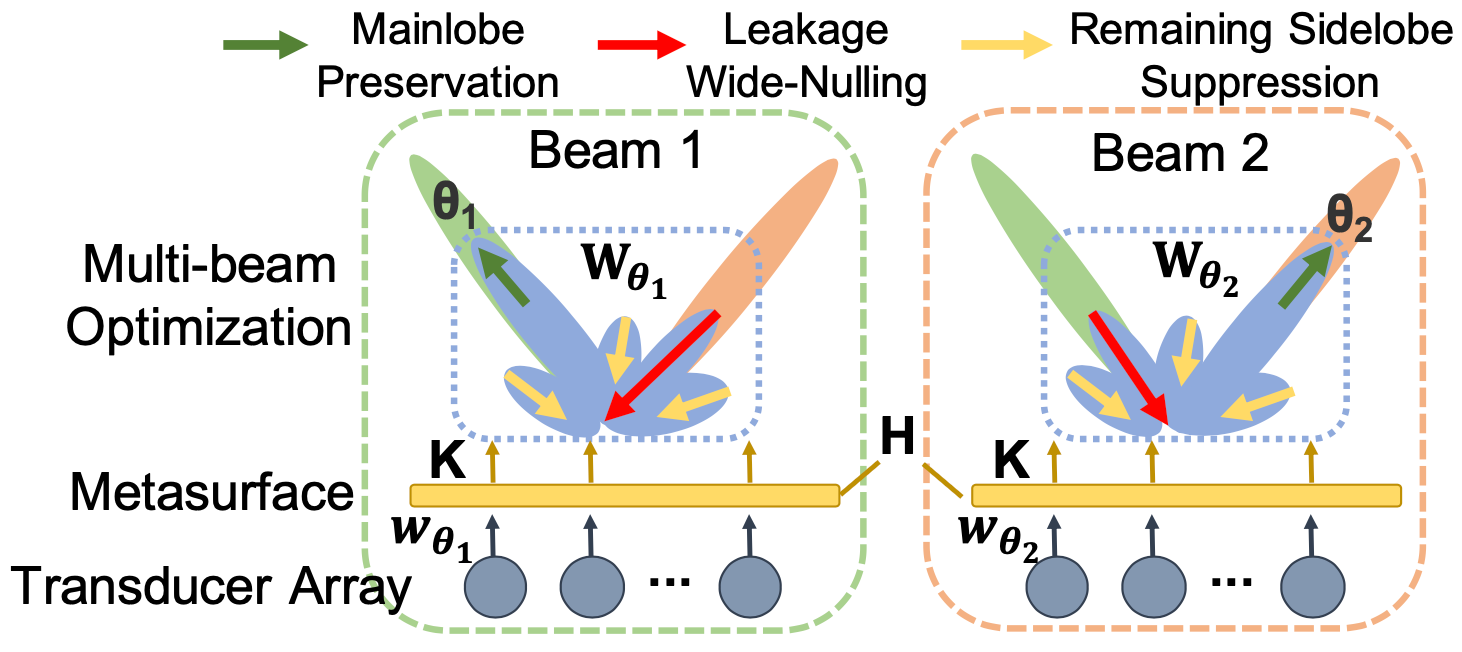
Results
We constructed a prototype of a multi-directional speaker employing our metasurface. We proceed to demonstrate the efficacy of our proposed Optimization-based Beamforming and Nonlinear Distortion Reduction scheme alongside traditional beamforming (Delay and Sum Beamforming) and MVDR Beamforming scheme.
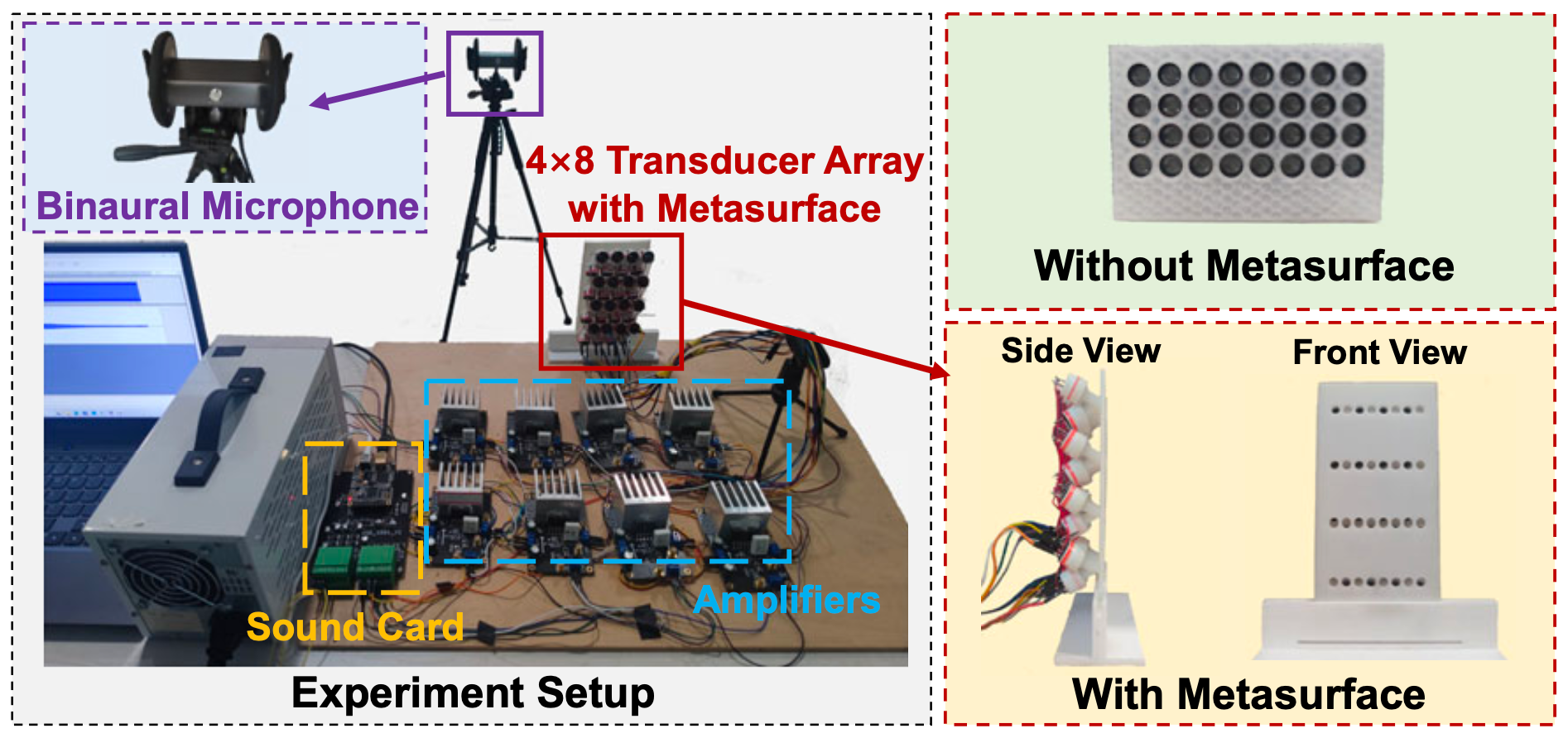
Prototype
As depicted in Fig. 6, our multi-directional speaker with the metasurface simultaneously transmits two distinct beams. The first beam is directed towards 0° to transmit a female voice, while the second beam targets 60° to transmit a male voice. Recorded voices from 0°, 30°, and 60° are provided below for reference.
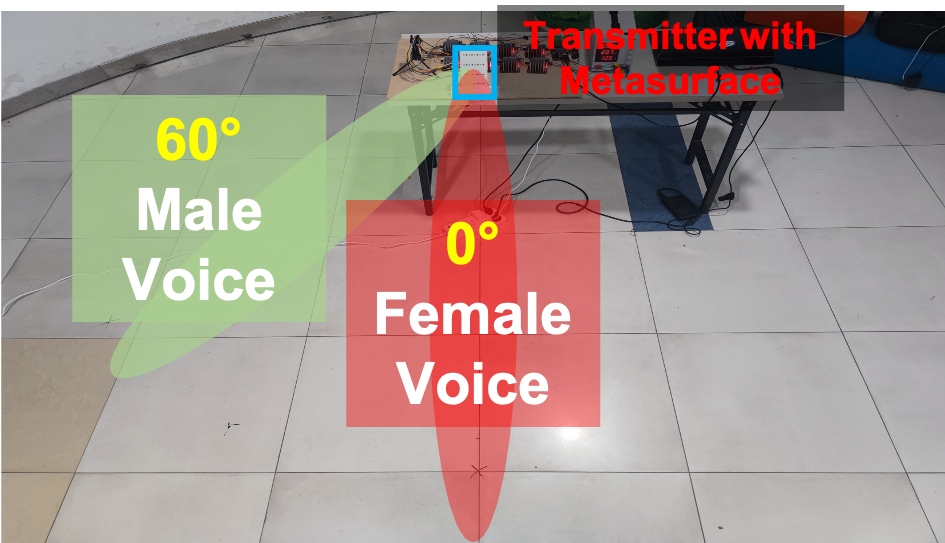
Performance
We constructed a prototype of a multi-directional speaker employing our metasurface. We proceed to demonstrate the efficacy of our proposed Optimization-based Beamforming and Nonlinear Distortion Reduction scheme alongside traditional beamforming (Delay and Sum Beamforming) and MVDR Beamforming scheme.
Original Voices.
| | |
| 0°: Female Voice | 60°: Male Voice |
|---|
Sound Received at 0° (Expected: Female Voice Only)
| | | |
| Ours | Traditional Multi-beamforming | MVDR Multi-beamforming |
|---|
Sound Received at 30° (Expected: No Voice)
| | | |
| Ours | Traditional Multi-beamforming | MVDR Multi-beamforming |
|---|
Sound Received at 60° (Expected: Male Voice Only)
| | | |
| Ours | Traditional Multi-beamforming | MVDR Multi-beamforming |
|---|